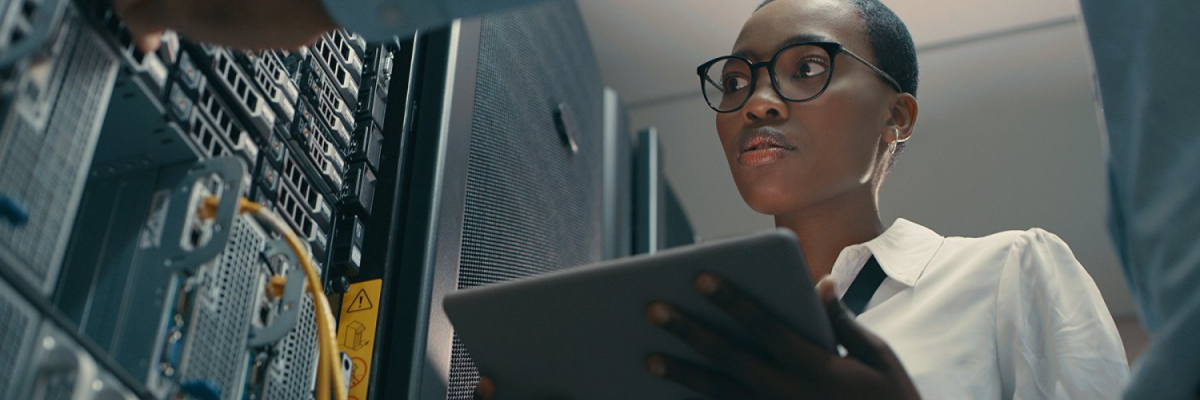AI isn’t simply one other workload—it’s a seismic shift in how infrastructure should carry out. What as soon as powered databases and digital machines now struggles to maintain up with the calls for of coaching large fashions, operating inference at scale, and visualizing real-time knowledge.
The tempo of innovation is relentless. Simply this month, NVIDIA launched the RTX PRO 6000 Blackwell Server Version, packing workstation-class visualization and AI acceleration right into a compact 2U type issue. It’s a transparent sign that the {hardware} panorama is advancing at lightning velocity, and static infrastructure can’t sustain. Enterprises can’t afford inflexible designs that turn into out of date as quickly as the following GPU drops.
To thrive on this new period, enterprises want greater than uncooked energy. They want composability. Infrastructure have to be modular, dynamic, and clever sufficient to adapt as quick as AI workloads do.
From racks and blades to composability
For years, organizations constructed round mounted server designs—rack or blade—that served properly for predictable workloads. However AI has shattered that predictability. At this time’s workloads are dynamic, knowledge intensive, and continuously evolving. Coaching fashions, operating inference, and rendering high-performance visualizations demand way more flexibility than conventional architectures can provide.
That’s the place composable infrastructure modifications issues. As an alternative of constructing purposes across the limits of {hardware}, composability lets infrastructure adapt to the wants of purposes. Compute, GPU, storage, and networking sources turn into modular, shared, and dynamically allotted. This provides IT groups the facility to scale, shift, and optimize in actual time.
Introducing UCS X-Sequence with X-Material Expertise 2.0: composability for the AI period
The brand new Cisco UCS X580p PCIe Node along with X-Material Expertise 2.0 cloud-operated by Cisco Intersight ship on the promise of true composability for the AI period. That is greater than a product refresh—it’s a strategic step towards Cisco Safe AI Manufacturing unit with NVIDIA, the place infrastructure and cloud administration work collectively as one, adapting seamlessly to workloads over time.
And it’s constructed for what’s subsequent. This newest type issue of UCS X-Sequence helps GPUs like the NVIDIA RTX PRO 6000 Blackwell Server Version, so clients can make the most of cutting-edge acceleration with no need to tear and substitute infrastructure.
Right here’s what meaning in follow:
- AI-optimized infrastructure. The system helps GPU-accelerated workloads for coaching, inference, and high-performance visualization inside a modular, composable structure.
- Impartial useful resource scaling. CPUs and GPUs may be scaled independently, with as much as eight GPUs per chassis and shared GPU swimming pools out there throughout nodes.
- Excessive-speed efficiency. PCIe Gen 5 delivers high-throughput efficiency with DPU-ready networking, optimized for the east-west GPU visitors that AI workloads generate.
- Clever useful resource allocation. GPU sources are dynamically allotted via policy-based orchestration in Cisco Intersight, enabling optimum utilization and improved complete value of possession.
- Future-proof design. The modular structure and disaggregated lifecycle administration enable seamless integration of next-generation accelerators with out requiring forklift upgrades.
That is the one modular server platform that unifies the newest GPUs and DPUs in a really composable, cloud-managed system, operated and orchestrated via Cisco Intersight.
With Intersight, idle GPUs are a factor of the previous. Coverage-based allocation lets IT groups create a shared pool of GPU sources that may flex to fulfill demand. The outcome? GPUs go the place they’re wanted most and waste is decreased, maximizing efficiency and return on funding for the group.
Why composability is crucial for AI infrastructure
The promise of AI isn’t realized by {hardware} alone—it’s realized by operating AI like a service. That requires three issues:
- Energy. AI workloads demand large parallel compute and GPU acceleration. With out enough efficiency, coaching slows, inference lags, and innovation stalls.
- Flexibility. Trendy workloads evolve quickly. Infrastructure should assist unbiased scaling of CPUs and GPUs to fulfill altering calls for with out overprovisioning or waste.
- Composability. Clever orchestration is crucial. With policy-driven administration throughout clouds, composable infrastructure ensures sources are allotted the place they’re wanted most—mechanically and effectively.
With UCS X-Sequence and X-Material Expertise 2.0, clients get all three in a single chassis. As GPU and DPU applied sciences evolve, the infrastructure evolves with them. That’s funding safety in motion.
Constructing for what comes subsequent
This launch is only one milestone within the Cisco composability journey. X-Material Expertise 2.0 represents the following era of a platform designed for steady innovation.
As PCIe, GPU, and DPU applied sciences advance—together with new accelerators just like the NVIDIA RTX PRO 6000 Blackwell Server Version—UCS X-Sequence will combine them seamlessly, defending investments and positioning clients for what comes subsequent.
The way forward for infrastructure is composable. It’s about freedom from silos, agility with out compromise, and confidence that your knowledge middle can adapt as quick as your online business does.
At Cisco, we’re not simply constructing servers for at the moment. We’re laying the muse for the AI-driven enterprise of tomorrow.
Able to see how Cisco and NVIDIA are redefining enterprise
Share:

